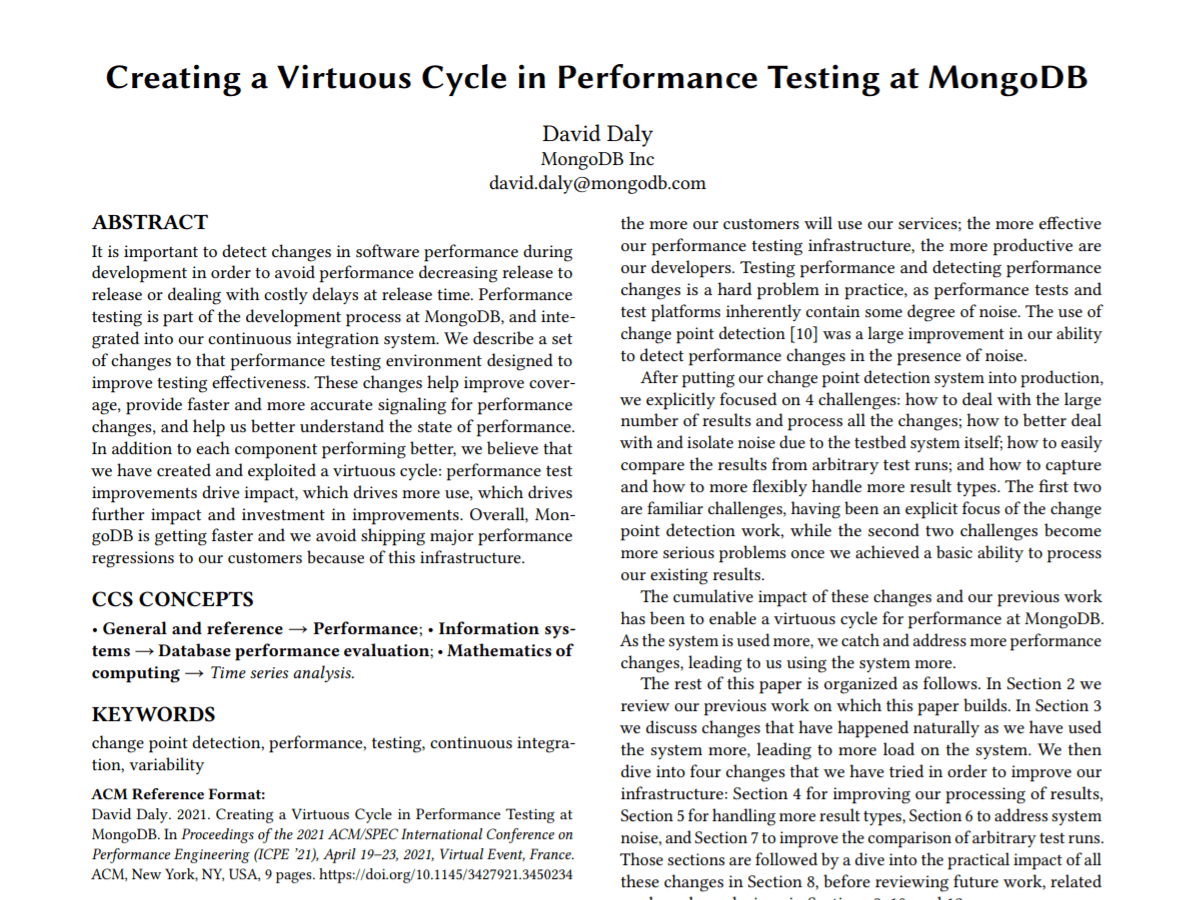Version Monitoring of Cloud and Databases
How fast is the new database version?
Is an upgrade worthwhile, or does it even involve risks?
Decide not only on the basis of features and patch notes, but also on the basis of performance measurement results whether a database update makes sense.
Minimise your risks and assess the cost-benefit ratio.
major database
update per year.
minor/patch releases
per year.
performance fluctuations
per DB update.
6 months
parts of your Cloud IaaS.
Database Releases: a Great Unknown
On what basis do you decide whether to install a new database version?
If this decision is made solely on the basis of the release notes, this can lead to performance problems in live operation.
The leading noSQL database manufacturer MongoDB experienced this phenomenon after several of its releases, when a large number of customers approached the manufacturer with this problem. When, contrary to expectations, the following patch release did not bring the hoped-for performance success, MongoDB decided to integrate performance testing into its development process. Since April 2021, the leading database manufacturer has been one of the first to integrate such performance testing.
And what does this look like for all other database manufacturers? Especially open source developments such as the popular Apache Cassandra or PostgreSQL? Missing!

Measure Performance - Update Database
Database vendors and open source database communities release a major release almost annually, plus regular monthly/quarterly minor and patch releases.
The majority of these releases are not performance tested and pose a potential risk to your software application. You will only notice the impact of the version update in the live system.
Cloud database benchmarking provides the most important results on performance metrics in advance and enables a well-founded update decision:
- Will the new version have an impact on the performance of my system?
- And if so, to what extent?
- Is the benefit of the new version so great that an upgrade is worthwhile considering the effort involved?
With its automated benchmarking platform, benchANT offers the ideal environment for standardised, comparable performance analyses of different database versions and thus enables quantitative update decisions.
Check out Cassandra 4.0 Release Performance Measurement
The Unknown: Evolution of Your Cloud Infrastructure
In addition to the database releases, the infrastructure of the public cloud providers also changes in regular cycles. For example, the underlying hardware is replaced in defined cycles and in some cases existing VM flavours are also migrated to the new hardware.
AWS EC2 replaces about a quarter of your existing hardware in 6-month steps, so that after 2 years the complete hardware is renewed. At the same time, software updates also take place on IaaS services. For example, regular updates are made to the hypervisor for server virtualisation.
Both the changes at hardware and software level usually take place without public communication, so that you do not receive any information about these changes. However, these updates have an influence on the performance metrics and thus directly on the performance of your software application.
Continuous Performance Testing with Cloud Database Benchmarking
With a continuous, regular performance testing process, you can reliably monitor the critical performance metrics.
Benchmarking with benchANT provides a standardised measurement tool for the key performance metrics for your cloud database setup and enables monitoring of cloud & database updates.
- Minimise risks!
- Discover optimisation potentials!
- Evaluate update opportunities!
- Make quantitative decisions!
Cloud Database Benchmarking Use Cases
USE CASE
Cloud Database Selection
USE CASE
Cloud Cost Optimisation
USE CASE
Capacity Planning

